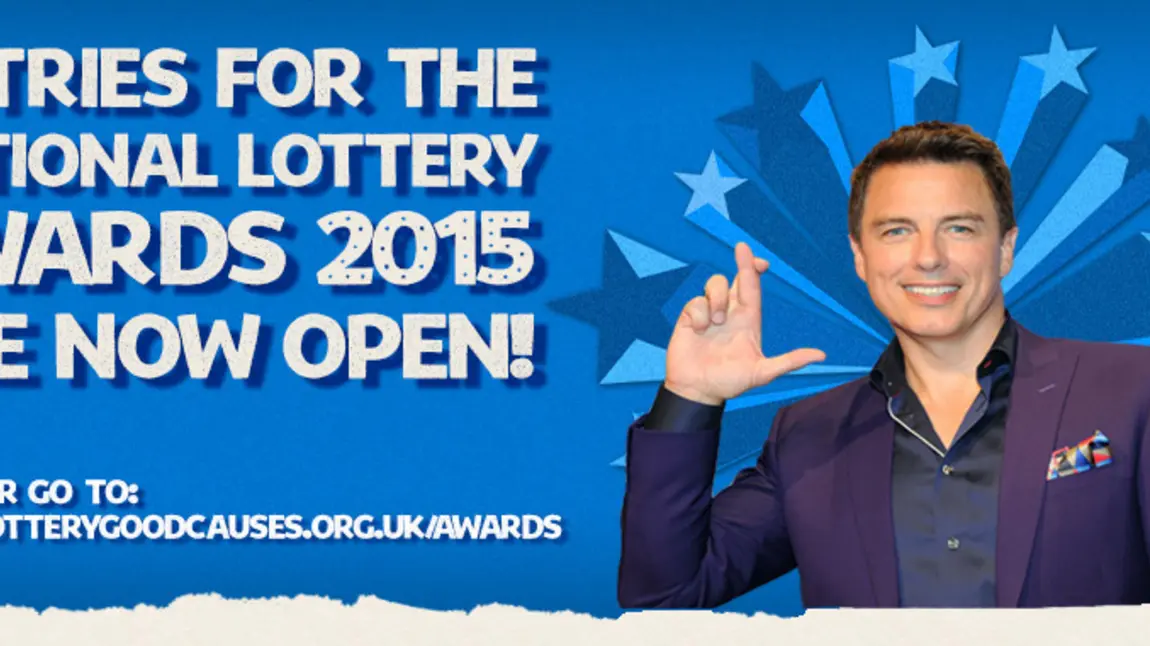National Lottery Awards 2015

Now in their twelfth year, the Awards recognise the incredible difference that Lottery funded projects have made to people, places and communities all across the UK with the 450,000 grants that have been made since 1994. They also celebrate the talent, hard work and amazing dedication of the people involved in running them.
Awards are given across seven categories, reflecting the different types of projects that benefit from National Lottery funding. These are: Art, Education, Environment, Health, Heritage, Sport and Charity/Voluntary.
How do the Awards Work?
National Lottery funded projects are invited to enter the Awards. Individuals can also nominate a Lottery funded project that they would like to be entered for an Award. When this happens we will contact the project that has been nominated and ask if they would like to enter, as participation must be voluntary.
All of the entries will be carefully read and assessed, then an independent judging panel will select up to 10 projects per Awards category to go through to a final round of public voting.
Voting will takes place in the summer. The project with the most votes in each category will be declared the winner. Voting is independently monitored and adjudicated by Electoral Reform Services.
The winners in each of the seven categories will be invited to a star-studded Awards event to be broadcast on BBC One. In addition to the Lottery funding they have already been awarded, the winners will each receive a £2,000 cash prize to spend on their project.
Entrants will be supported by the National Lottery Awards team throughout the process.
Visit the Lottery Good Causes website to enter.
Previous Lottery Award winners
- The Chandelier of Lost Earrings (arts): The Chandelier of Lost Earrings is a sculpture made from over 3,000 single earrings donated by owners who have lost the other half of the pair. The women who contributed items to the project also shared, via letters, the story attached to it, revealing why the earrings were so meaningful to them and these stories have become part of the artwork’s legacy.
- Fixers (charity): Fixers are young people aged 16 to 25 with different backgrounds, interests and life experiences, and come from all UK postcodes. 12,500 Fixers are using their experiences to prevent what happened to them happening to someone else. They do this by telling their own stories in their own words. The issues tackled in some 1,500 projects include eating disorders, abuse, physical and mental health conditions, offending and cyberbullying.
- Skydancer (education): Skydancer: promoting the conservation of hen harriers across northern England. The hen harrier is currently on the brink of extinction as a breeding bird in England. Working together with local communities, the project aims to restore the species through nest protection, awareness-raising programmes, and education through local schools.
- The Helix (environment): The Helix project, with the help of National Lottery funding, has transformed 350 hectares of land between Falkirk and Grangemouth in Central Scotland into a thriving environmental community.
- Come Eat Together (health): Come Eat Together is a volunteer peer support project that helps older people access, cook and enjoy healthy food together.
- St George’s Market Restoration (heritage): St George’s Market is a renovated and restored large historical indoor market building in Belfast that dates back to the 1890s.
- Jubilee Sailing Trust (sports): The Jubilee Sailing Trust brings together men and women of all physical abilities, through the adventure and challenge of sailing aboard two very special tall ships, Lord Nelson and Tenacious. Crew members are taught vital sailing skills during the voyages as well as important life skills.